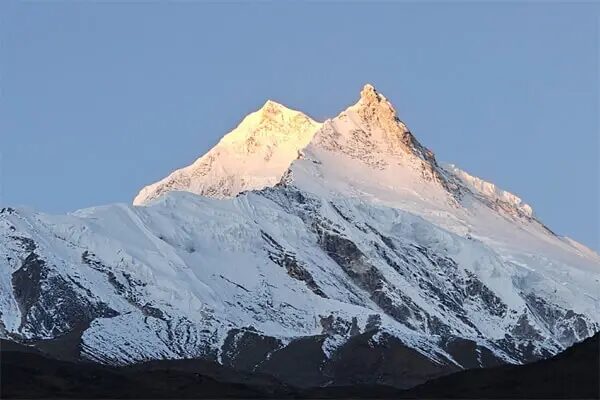Introduction
The Manaslu Circuit Trek is a thrilling adventure in the remote region of the northern Himalayas. The trek takes you around the base of Mount Manaslu, the world’s eighth-highest mountain. It offers a unique blend of natural beauty, cultural experiences, and diverse flora and fauna. The trek reaches the highest point at the Larkya La Pass with an altitude of 5,106m. It is important to understand and manage the altitude challenges for a safe and enjoyable trek. Altitude challenges involve reduced oxygen levels and potential altitude sickness. This article covers altitude, its effects and challenges, and how to overcome them.
Understanding Altitude and its Effects
It is essential to understand altitude and its effects for a safe and successful journey. The Manaslu Circuit and Everest Base Camp are some of the high-altitude trekking routes. Altitude refers to the height above sea level. As the trekkers ascend above 2,500m, the air becomes thinner reducing oxygen availability. This can cause altitude sickness, including symptoms like headaches, fatigue, dizziness, and nausea.
Risks of Acute Mountain Sickness (AMS) increase at higher elevations like Larkya La Pass(5,106m). If precautions are not taken, severe conditions like High Altitude Pulmonary Edema (HAPE) or High Altitude Cerebral Edema (HACE) can develop.
The body needs time to acclimatize during Nepal trekking. Gradual ascent, proper hydration, a nutritious diet, and adequate rest help the body adjust to lower oxygen levels. Trekkers are advised to listen to their bodies and avoid overexertion. Altitude challenges are a natural part of the Manaslu Circuit trek. With proper preparation and awareness, trekkers can enjoy unique experiences without compromising their health.
Prevention Strategies
Successfully managing altitude challenges on the Manaslu Circuit Trek begins with effective prevention strategies.
Acclimatization:
One of the most critical aspects is acclimatization. You should allow your body to adjust to the reduced oxygen levels at higher elevations. The trek’s itinerary often includes rest days in key locations like Samagaun or Samdo. It provides the perfect opportunity for light hikes to higher altitudes and better acclimatization. Do not skip these rest days, as they are vital for your safety and well-being.
Pacing:
Trekking at a steady, manageable pace reduces strain on your body and minimizes the risk of altitude sickness. Rushing to cover more distance in a day can increase fatigue and altitude-related complications. Always ascend gradually, as you approach higher altitudes like the Larkya La Pass.
Hydration:
Hydration plays a crucial role in preventing altitude sickness. At high elevations, your body loses moisture faster due to increased respiration and dry air. Drink at least 3-4 liters of water daily and avoid dehydrating beverages like alcohol. Staying hydrated helps maintain energy levels and reduces the risk of headaches.
Diet:
Your diet also supports altitude adjustment. Focus on light, high-calorie meals such as dal bhat, soups, and carbohydrate-rich foods to maintain energy levels. Avoid heavy or greasy food that can be harder to digest at altitude.
Fitness preparation:
Fitness preparation before the trek helps you cope better with the physical demands of high-altitude trekking. Cardio exercises like running, cycling, and stair climbing build stamina. Strength training improves muscle endurance for steep ascents. A well-prepared body can adapt more easily to altitude.
Mental Preparation:
A positive mindset and staying calm are important during altitude stress. Practice patience and listen to your body when you gain altitude.
High-Altitude Sections on the Manaslu Trek
The Manaslu Circuit Trek involves ascending to some of the most stunning yet challenging high-altitude sections.
Larkya La Pass is the high point of the journey. Trekking at this elevation requires extra caution as oxygen levels are significantly lower. There is an increasing risk of altitude sickness. The key to overcoming this section lies in proper acclimatization during earlier stops like Samagaun and Samdo. Spending extra time at these villages helps your body adjust and improves acclimatization.
To tackle the Larkya La Pass, an early morning start is essential, as weather conditions are most stable at dawn. The climb is strenuous but the panoramic views of Manaslu, Himalchuli, and Cheo Himal make it worthwhile. Layers of warm clothing, trekking poles for stability, and adequate hydration are vital during this ascent.
Other high-altitude points like Dharapani and Bimthang offer incredible vistas. You will get a chance to experience the transition from rugged alpine terrain to lush valleys. Trekking through these sections requires persistence. With careful planning and a steady pace, the challenges of high altitude can be managed. Hence, the rewards of the trek are more fulfilling.
Dealing with Altitude Challenges on the Trail
During the Manaslu Circuit trek, altitude challenges can arise suddenly even with proper preparation.
How to recognize and address symptoms early
Recognizing and addressing symptoms of altitude sickness or Acute Mountain Sickness (AMS) is crucial. The first signs of AMS, such as headaches, nausea, dizziness, or fatigue, should never be ignored. If you experience these symptoms, inform your guide immediately. The most effective initial step is to rest, hydrate, and allow your body time to adjust.
Role of guides and porters in monitoring trekkers
Guides and porters play a significant role in monitoring trekkers for altitude-related issues. They are trained to recognize the progression of AMS. They can assist in determining whether a trekker needs extra rest, medication, or in severe cases, an immediate descent to a lower altitude. Listening to their advice is essential for staying safe.
Decision making
If symptoms persist or worsen, such as difficulty breathing or confusion, descending quickly is recommended. In such situations, emergency oxygen can be used if available. Taking frequent breaks, maintaining a steady pace, and hydration is vital throughout the trek. Be proactive and attentive to your body’s signals. You can manage altitude challenges effectively and continue enjoying the stunning landscapes of the Manaslu region.
Conclusion
The Manaslu Circuit trek is a challenging journey in the remote region. Crossing the trek’s highest point, Larkya La Pass is physically demanding. The Annapurna Base Camp trek presents fewer altitude challenges than the Manaslu Circuit Trek. However, both require acclimatization, proper pacing, and fitness preparation.
Planning your trek with a trusted agency like Nepal Trekking Routes ensures a well-crafted itinerary with built-in acclimatization days. They prioritize your safety and offer proper guidance for a rewarding trekking experience.
Booking Process by Nepal Trekking Routes
To book any of these treks tours through Nepal Trekking Routes Pvt. Ltd, begin by contacting us or WhatsApp at +977 9841064142 to discuss your preferred dates, group size, and specific demands. They will provide a detailed itinerary covering these trek’s duration, highlights, cost, and inclusions such as a guide, porter, meals, accommodation, and transportation.
Prior to the trek, A thorough pre-trek briefing will be given to you, including important details on altitude acclimatization, fitness preparation, and packing. To make sure everything is ready for your expedition, the organization will complete all logistical preparations, such as lodging, transportation, and permits. When you first arrive in Nepal, the team will ensure that all aspects of the trek are organized, providing you with a smooth and unforgettable experience on these treks.





























